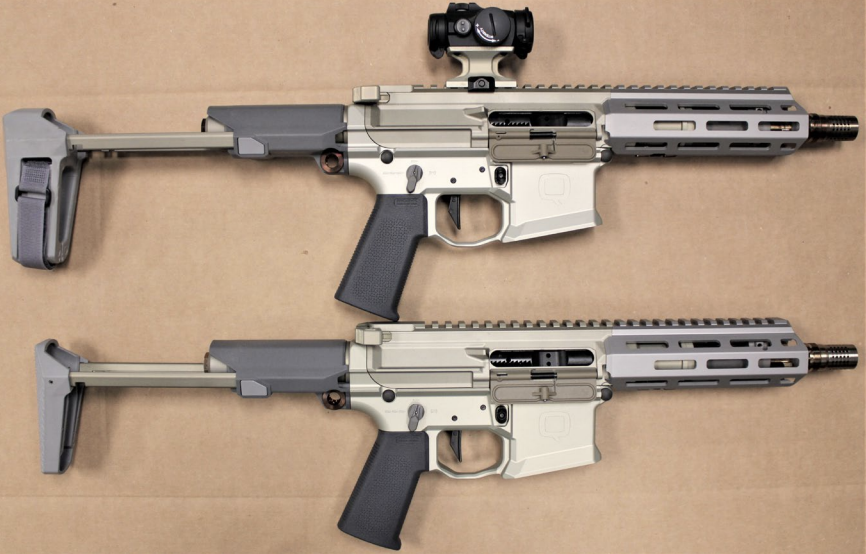Last month, the U.S. House of Representatives passed a budget bill on a party-line vote that would remove silencers from the National Firearms Act (NFA), making them much easier to own. But on June 16, days after a heavily armed assassin disguised as a police officer attacked Minnesota lawmakers in their homes, the Senate Finance Committee released its first draft of the budget reconciliation bill, which goes much further and would remove silencers, short-barreled rifles and shotguns, and other firearms from NFA regulation entirely.
As Congress considers deregulating these weapons — a move that would boost gun industry profits — it is important to understand the threat they pose to public safety.
To learn more about silencers and why they’re dangerous, click here.
A Closer LOOK AT NFA WEAPONS
Under the NFA, anyone interested in buying or building a machine gun, silencer, short-barreled rifle or shotgun, or other easily concealed weapon, must first submit an application to the Bureau of Alcohol, Tobacco, Firearms and Explosives (ATF) along with their fingerprints, a passport-style photo, and a $200 tax stamp before undergoing an enhanced background check. According to the ATF, Congress enacted these requirements in 1934 to “curtail, if not prohibit” the weapons frequently used in “gangland crimes of that era,” such as the St. Valentine’s Day Massacre in Chicago, where gangsters disguised as police officers killed seven rival gangsters using a sawed-off shotgun and fully automatic “Tommy guns” with 12-inch barrels and drum magazines.
Criminals at the time chose these weapons because they were powerful yet easy to hide under a coat and unleash on unsuspecting victims. Other examples include the Browning Automatic Rifles (BARs) and semi-automatic shotguns with cut-down barrels carried by notorious robbers Bonnie Parker, Clyde Barrow, and John Dillinger.
short-barreled rifles and shotguns
The NFA defines short-barreled rifles and shotguns as shoulder-fired weapons with rifled or smoothbore barrels shorter than 16 or 18 inches, respectively. These firearms are particularly dangerous because they’re much more powerful than handguns while being just as easy to conceal on one’s person, including under a coat or in a backpack.
In recent years, at least four mass shootings have been committed with short-barreled AR-15s, including in Dayton, Boulder, Colorado Springs, and Nashville. Another short-barreled AR-15 was recovered after a mass shooting at a Super Bowl rally in Kansas City, in which one person was killed and 22 others were wounded, in February 2024.

Short-barreled shotguns — particularly those with cut-down barrels — have also been used in high-profile mass shootings, including at Columbine in 1999, at the Washington Navy Yard in Washington, D.C., in 2013, and at Sante Fe High School in Texas in 2018.

of a Remington 870 shotgun with a saw. (FBI Photo)
any other weapons
The NFA also regulates what are defined as “any other weapons,” or AOWs, a catch-all term used for easily concealed firearms that are not considered pistols, revolvers, or short-barreled rifles or shotguns. AOWs include firearms disguised as other objects, including pen guns, cane guns, and umbrella guns; shotguns shorter than 26 inches and manufactured without a shoulder stock; and handguns that have a second vertical grip showing that they are intended for two-handed firing.
The category may seem confusing at first, but the NFA was originally drafted to regulate pistols and revolvers — a provision that was removed from the bill before it was enacted — and the AOW language was designed to prevent people from exploiting loopholes.

Spies have carried pen guns and umbrella guns since at least World War II, and the KGB used the latter to assassinate a Bulgarian dissident in London in 1978. A Pennsylvania man also attempted to rob a bank with the cane gun shown above, which could fire one shotgun shell at a time, in September 2003. Without the NFA, these novelty weapons would become much more prevalent in the United States, and would certainly be used in more crimes.
